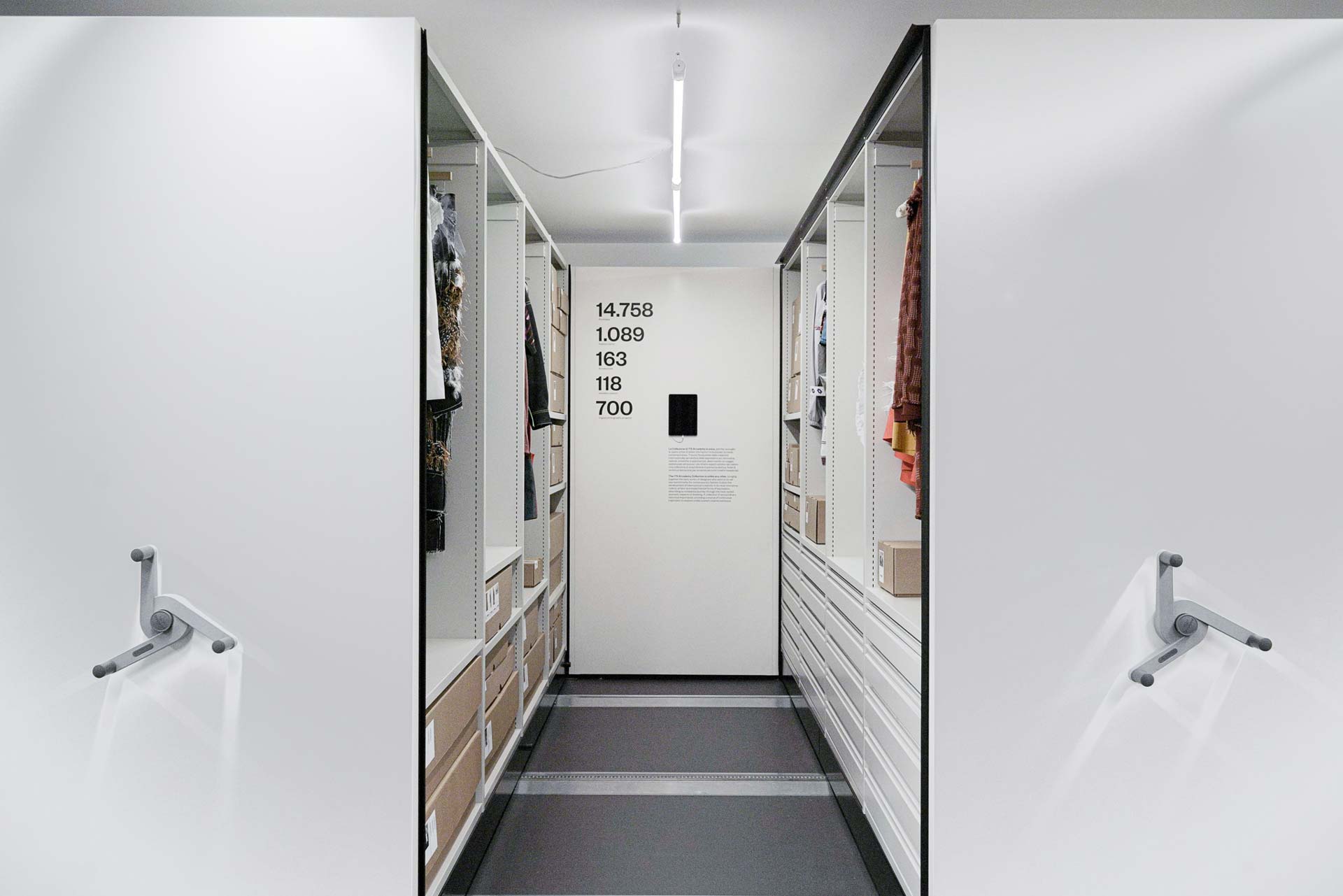
Handling the History of Contemporary Fashion Evolution. Interview with the head of our Collection team, in charge of handling the ITS Foundation’s archival patrimony.
02 Dicembre 2022
Stepping into a museum space can often feel like everything’s stuck in time, frozen. As if it were a place where not much happens, other than cleaning and occasional moving of pieces to set-up exhibitions. But the opposite is true: to preserve items as if they were stuck in time, frozen and never-changing, the tasks involving conservation and preservation are endless. And collections are forever changing, through acquisitions and loans, for example.
ITS Arcademy has raised the bar in terms of workflow at the ITS Foundation, and we had a chat with the head of our conservation team, responsible for handling of the entire ITS Foundation archival patrimony.
ITS: Can you tell us about the tasks your team manages?
CT: The ITS Foundation’s Collection team is in charge of the archiving, conservation and handling of our entire patrimony of creative items collected in these twenty years. It follows loans, acquisitions and restoration projects too.
Each of these tasks are whole worlds in their own right, involving over 14,000 portfolios, 1,017 fashion items, 163 accessories, 118 jewellery pieces and 700 photographic projects. It’s quite obvious from the above that a huge amount of time is invested in the management of our collection.
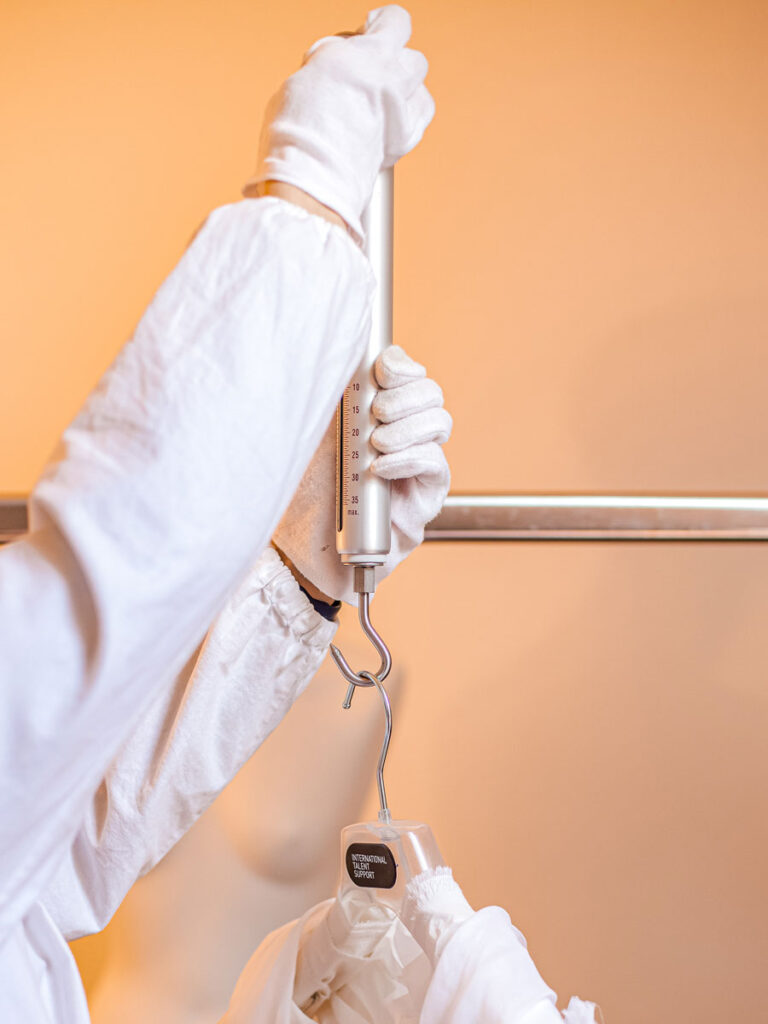
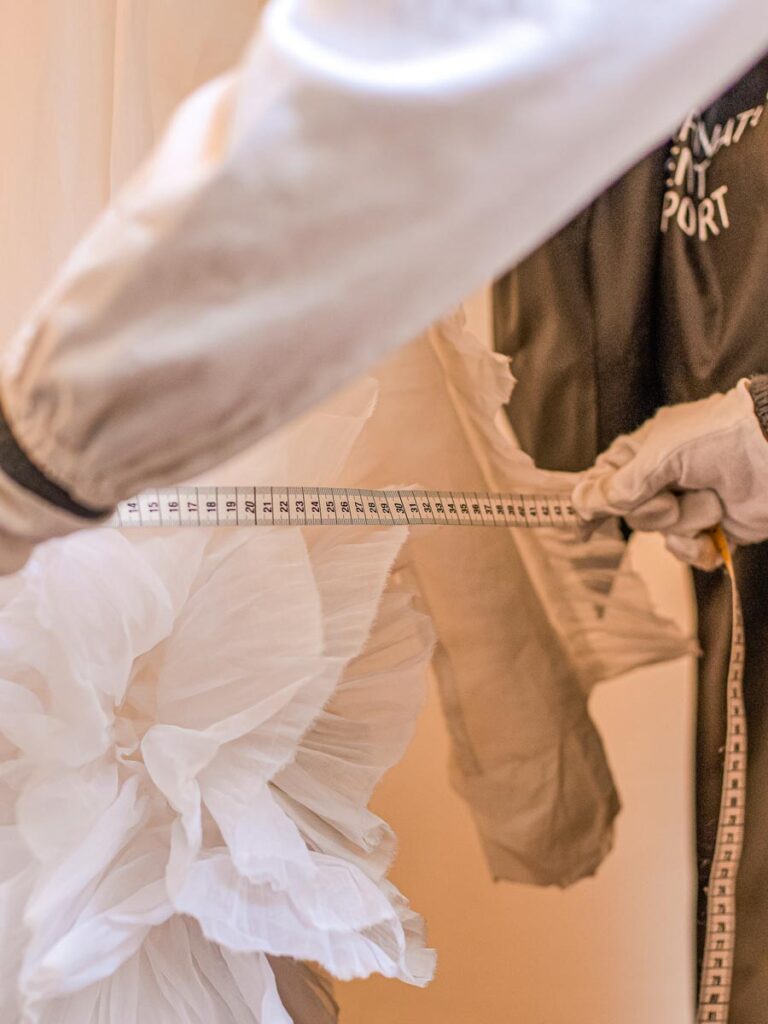
ITS: How have you approached the task you’ve been entrusted with, from assessing the situation back when the entire collection was archived in its old venue, to the relocation to ITS Arcademy?
CT: From 2002 – as far as portfolios are concerned – and then 2006 with the first fashion items, the entire ITS Collection was stored in the attic of an historic building, where our offices were also located, under the name “ITS Creative Archive”.
It was a magical place, in so many ways, just by seeing old videos of the visits that were made there to catch the emotion in the visitors’ eyes. Despite the magic, the space couldn’t house the growth of the collection over the years and was definitely not suitable for conservation. Considering the space available all attempts were made to handle and preserve everything as well as possible.
The actual first steps to move the collection from its original location to the new compactable archives in the ITS Arcademy building began at the end of 2019. It took us quite a while to study & develop a new database system that would allow us to systematically treat every single item. We then needed 3 months and a team of 6 to assess & prepare the entire archive. We had to check and write down the state of preservation, take new measurements and check volumes again as well as decide what needed to be stored hanging, lying and how much space was needed and any further detailed prescription. This initial in-depth analysis led us to fine-tune the configuration of new conservation supports, as well as plan future restoration and conservation systems.
ITS: Once this huge assessment was made, how did you proceed moving the entire collection?
CT: The new database was fundamental because it was developed to match the new home of the collection, in terms of what we needed to do to properly move it. We digitalised all sorts of information for each piece: technical characteristics of course, pictures, prescriptions, as well as any kind of media related to it (pictures from our official ITS Contest photogalleries, videos, etc.). We also included – and this is one of the unique aspects that makes our collection so special – all of the inside stories about items and designers: a storytelling element that really only belongs to the ITS Family. Once the new database was ready, we were ready for the next step, confident that no mistakes (or as little as possible) would be made.
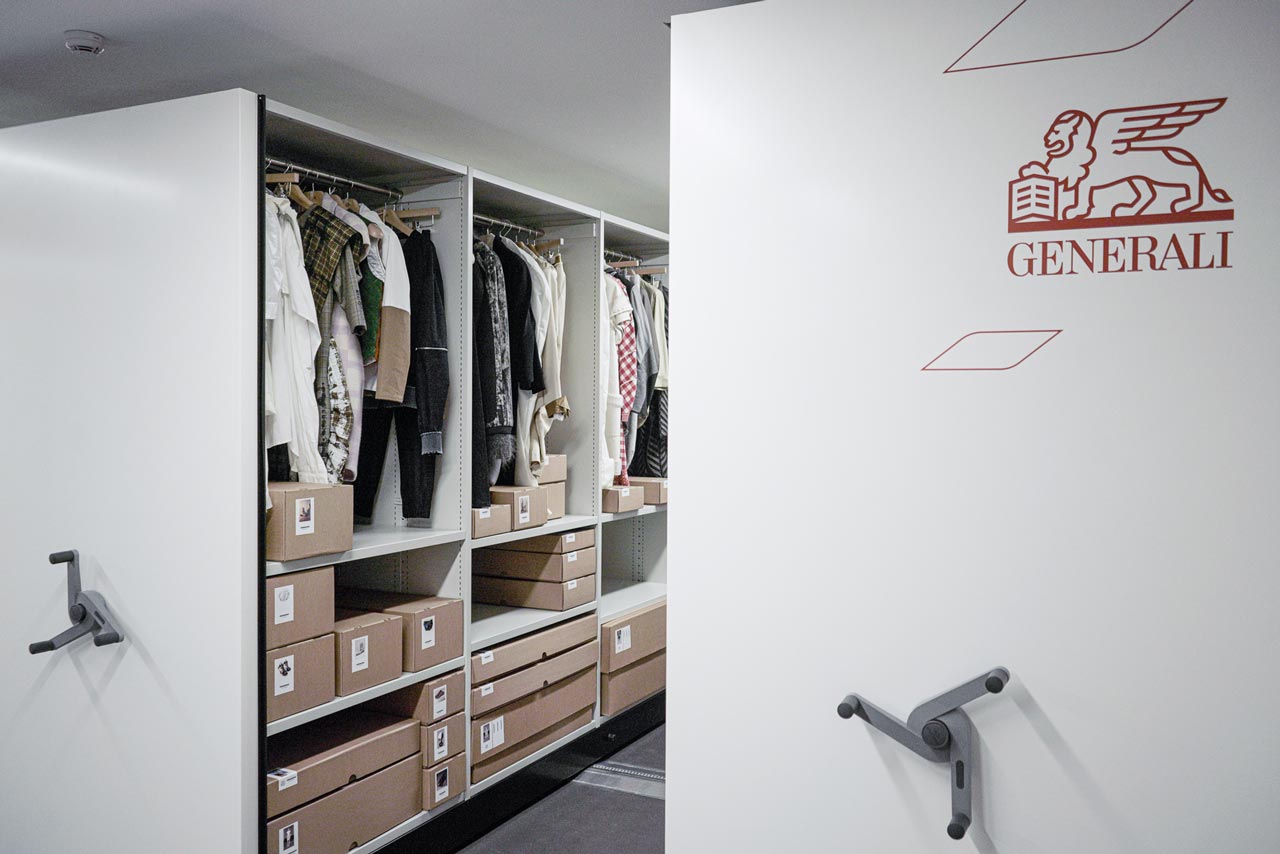
We began moving the collection to the new building in early 2021. In about two months all items were moved to their final destination in the new compactable archives. A long operation but at the same time very exciting one: 2 years of planning and work culminated with this great result. Treasures we felt were constricted, often suffering, in their previous location, were now where they deserved to be. Once we moved everything, it felt as if the collection could breathe again. And we have to thank our partner Generali for our conservation area: they support the preservation and care of the ITS Arcademy Collection, realising that it is not only important to insure the future, but to ensure it, in order to build a collective memory and protect a heritage that belongs to humanity. Allowing human beings to be inspired and develop their ideas, a fundamental mission of Generali itself.
Each item now has its specific type of garment hanger or tailor-made box, and is able to maintain itself over time, protected and treated as it was always meant to be, preserving its shape, colours and material integrity for decades to come.
ITS: Conservation and restoration, from now on, must be so vital. Can you elaborate on this?
CT: We began our restoration program during the item selection curated by fashion historian Olivier Saillard for “The First Exhibition: 20 years of Contemporary Fashion”, which was previewed during ITS Contest 2022 and which will inaugurate officially in March 2023 with the opening of ITS Arcademy. And while the exhibition was being set up, further work was carried out: many pieces, once they were ready to be dressed on mannequins or placed on display stands, showed signs of ‘stress’ in specific spots, or the risk of possible alterations over time. In order to preserve them in the best possible way throughout the months on display, ad hoc preventive conservation measures were carried out. Needless to say, during the entire timeframe of the exhibition all pieces on display will be periodically monitored and we are ready to carry out restoration or conservation work, should it be necessary.
This tiny step in the restoration process allowed us to codify a specific protocol that must be carried out on the entire collection, from now on.
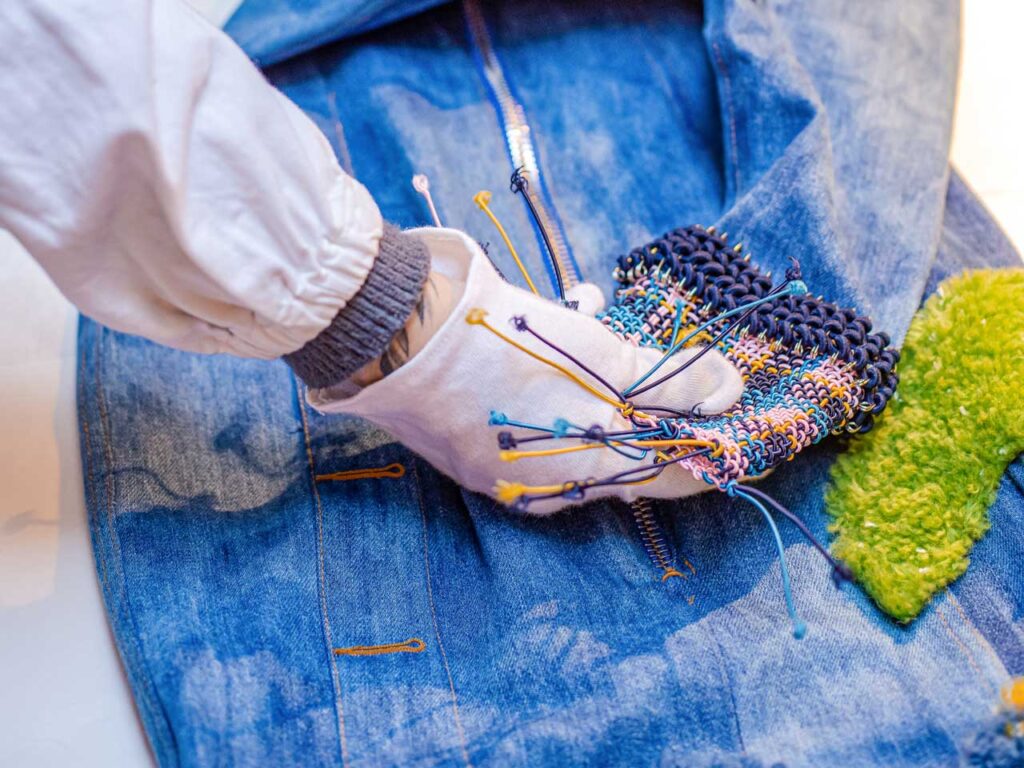
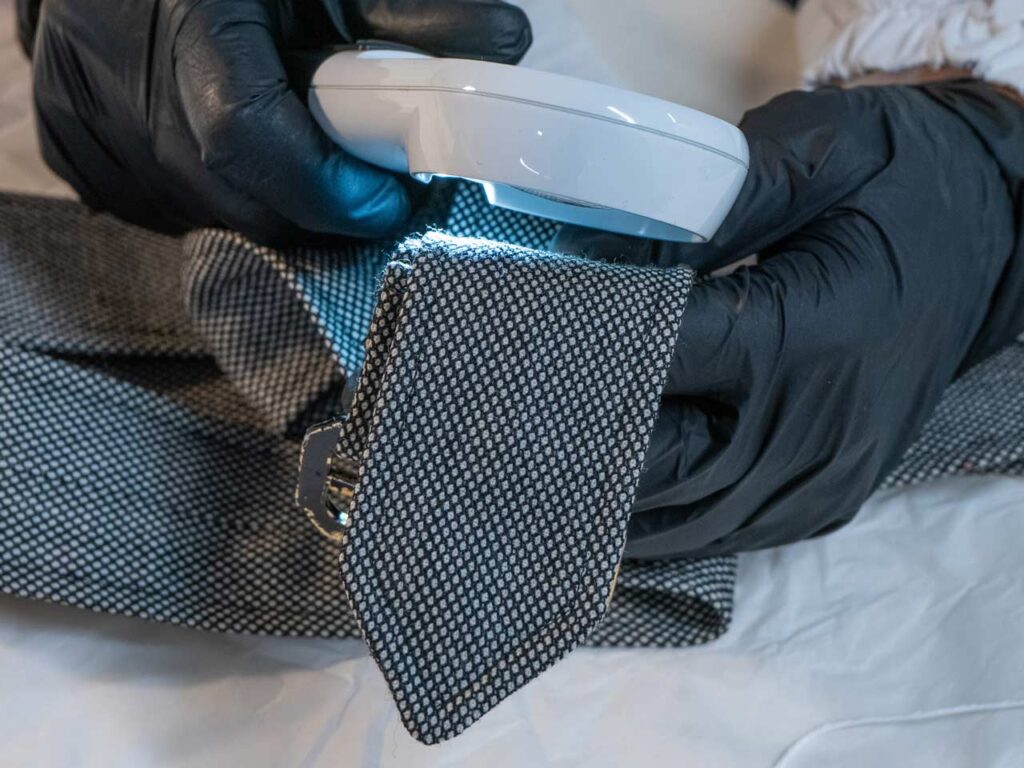
ITS: What you are currently working on?
CT: We are currently working on three separate tasks. First of all we need to close the 2022 edition of the contest, which for our team involves the registration and archiving (also from a conservation point of view, of course), of all portfolios enrolled, and each item donated by the finalists, as well as special projects. 2022 was a special edition for us, since we had our 20th anniversary, and in addition to the above two former finalists surprised us by donating items from their ITS collections: Einav Zucker (who won back in the first edition) donated her entire 2002 collection, while 2007 finalist Susan Dimasi donated pieces from her eponymous brand spanning over a few years.
Secondly, we are working on constant maintenance: monitoring of the exhibits, periodical cleaning of all the items in the collection, ongoing improvement of the conservation protocols and of our in-house database. And planning new cabinets and conservation supports (boxes, hangers, mannequins,..) to store all future material.
We are also always looking ahead and planning future work: what to do, when & how to do it, not just months but years from now. We need to think in advance about all the necessary resources and the professionals we will want to work with. We’re basically building very solid foundations in order to be prepared for everything we can possibly think of right now. And the collection is constantly growing: every new piece must undergo the complete registration process, to be included in the collection and enter the maintenance program. In addition, each acquisition has to be formally evaluated to officially become part of the heritage.
Furthermore, the setting up and dismantling of exhibitions is one of the most delicate phases in the maintenance of a collection: several staff members are working on and around each item involved during these hectic phases. Everyday work comes to a standstill and our entire team is involved in the management and monitoring of the collection, in addition to the actual set-up.
We’re basically never bored, it’s an ever-evolving job and our schedule is already roughly sketched out for the next fifteen years…